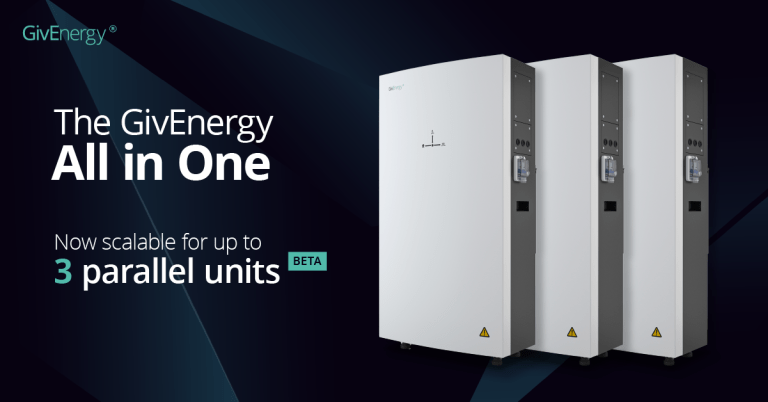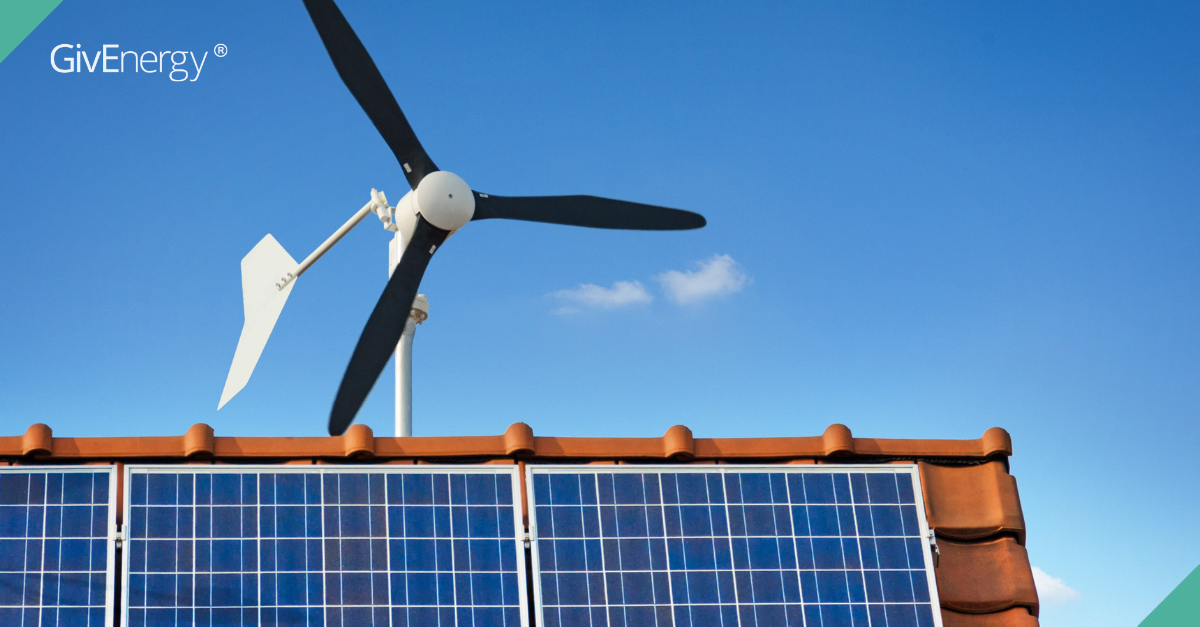A wind turbine for home can be a great way to generate your own energy from a renewable source. However, you need to bear a few things in mind when deciding if it’s right for you.
More and more households are seeking to generate their own renewable energy. While solar panels coupled with battery storage remains a popular choice, wind has emerged as an alternative for some.
Not so long ago, 100% of GivEnergy battery storage solutions were fitted for solar. However, installations for wind projects are now into double figures. What’s more, there is at least one GivEnergy installer in the British Isles which specialises in battery storage for wind.
How wind energy can benefit you
Let’s demonstrate with an example.
Bob lives in a rural UK property where windy weather is nothing abnormal. He invests in a wind turbine for home, either a roof-mounted or pole-mounted model (more on this later).
Bob generates energy when the wind is blowing, although this is not always when his energy use is at its highest.
That’s where a battery energy storage system – aka BESS – comes in. Bob installs a BESS so he can store the energy generated from his wind turbine. His battery works with an AC-coupled inverter to turn the electricity generated from direct-current (DC) to alternating-current (AC).
Bob then uses this energy during times of peak demand and saves on his electricity bills. This works even better for Bob if he’s on a smart tariff.


Is a home wind turbine right for you?
Before you invest in a home wind turbine for your property, there are a few things you need to think about:
1. Weighing up the costs and benefits
The costs and savings of wind energy depend on what type of wind turbine you choose. Here’s a quick overview.
(Note that the numbers given below are ballpark estimates provided by The Eco Experts and include estimated savings as part of the government’s Smart Export Guarantee.)
Roof-mounted – costs
As the name suggests, this is a wind turbine which – like solar panels – you can install on the roof of your property.
These tend to be small systems approximately 1-2 kW in capacity. Over the course of a year, you could get an estimated micro-generation of 844 kWh of electricity. Bear in mind the average UK household uses around 2,700 kWh per annum.
Savings on your energy bills could be around £177 per year. When you consider that the system costs around £2,000-£3,000 including installation, it may take many years before you break even.
Assuming that your roof-mounted system has a 20-year lifespan, you may never see savings or may only save a menial amount.
Pole-mounted (standalone) – costs
These are bigger systems which tend to span from 1.5 kW-10 kW in capacity.
Given the size, you will pay more for a standalone wind turbine; including installation, you may be looking at anywhere between £7,000 and £58,000.
Let’s say you splash out and install a 10 kW system at a cost of between £45,000-£58,000. You’ll be set to generate approximately 17,200 kWh of electricity per year, saving you approximately £3,600.
All thing considered, you’re still looking at 15+ years before you break even.


Other costs
In addition to the price of the system and installation, you should also bear in mind the following:
- Planning permission (more on this later)
- Insurance
- Maintenance (particularly costly for a big system)
Once again, the above costs are approximate figures. Make sure to do your own comprehensive cost-benefit analysis before deciding on whether to install a wind turbine on your property.
2. Location, location, location
A wind turbine for home will only be effective in areas which are exposed to high winds (who knew?!)

A wind turbine for home is not recommended in areas with wind speeds of less than 5 metres per second (m/s).
The Energy Saving Trust has a tool for checking the wind speed in your area. However, this is only available for those in Scotland right now.
Instead, you can use the Met Office website for a rough estimate.
For more accurate readings, you may wish to invest in an anemometer and data-logging equipment. Note that this could set you back £400-600.
According to Met Office best practices, you should place the anemometer around 10 metres above the ground to get an accurate wind speed reading.
You’ll also want to consider seasonal variations when measuring the wind speed in your area.
3. Planning permission
You may need planning permission to install a wind turbine for home. Specific rules vary depending on where you are in the UK.
Here’s a quick breakdown:
England
Wind turbines are classed as ‘permitted development’ and do not require planning permission if the following conditions are met.
For all wind turbines:
- There must be no other wind turbine or air source heat pump on the property
- The bottom of the turbine’s blades must be at least 5 metres from the ground
- The turbine site must not be in a Conservation Area, World Heritage site or in the grounds of a listed building
Building-mounted turbines (including roof-mounted):
- The property must be detached
- The top of the turbine’s blades must be no more than 3 metres above the top of the property or 15 metres above the ground
- The turbines must be located at least 5 metres from the edge of the property
Pole-mounted turbines:
- The top of the turbine must be no more than 11.1 metres above the ground
- The turbine must be at least 1.1 times of its own height away from the edge of the landowner’s land
Scotland
All roof-mounted wind turbines require planning permission.
For pole-mounted wind turbines, planning permission is not required if the following conditions are met:
- The wind turbine is the only one on the property
- The wind turbine is situated more than 100 metres from the boundaries of another property
- The wind turbine is not located in a Conservation Area, World Heritage site, area of scientific interest or within the grounds of a listed building.
Wales and Northern Ireland
Planning permission is required for the installation of all wind turbines.
Not for everyone
Make no mistake. Wind has made a huge contribution to meeting the UK’s energy needs in recent times.
In the first three months of 2023, a third of the country’s electricity came from wind farms, making wind the UK’s main source of electricity for the first time.
Meanwhile, wind farms generated 21.8 gigawatts within a 30-minute period during Storm Pia in December 2023 – providing 56% of the country’s electricity.
If you’re in the right location and have considered all the relevant costs involved, installing a wind turbine for home could be for you.
However, if you’re looking to generate your own renewable energy, solar will more likely be a better option (with a battery energy storage system, of course).
Looking to install a battery energy storage system to go with your solar panels or wind turbine? Find an installer today.










